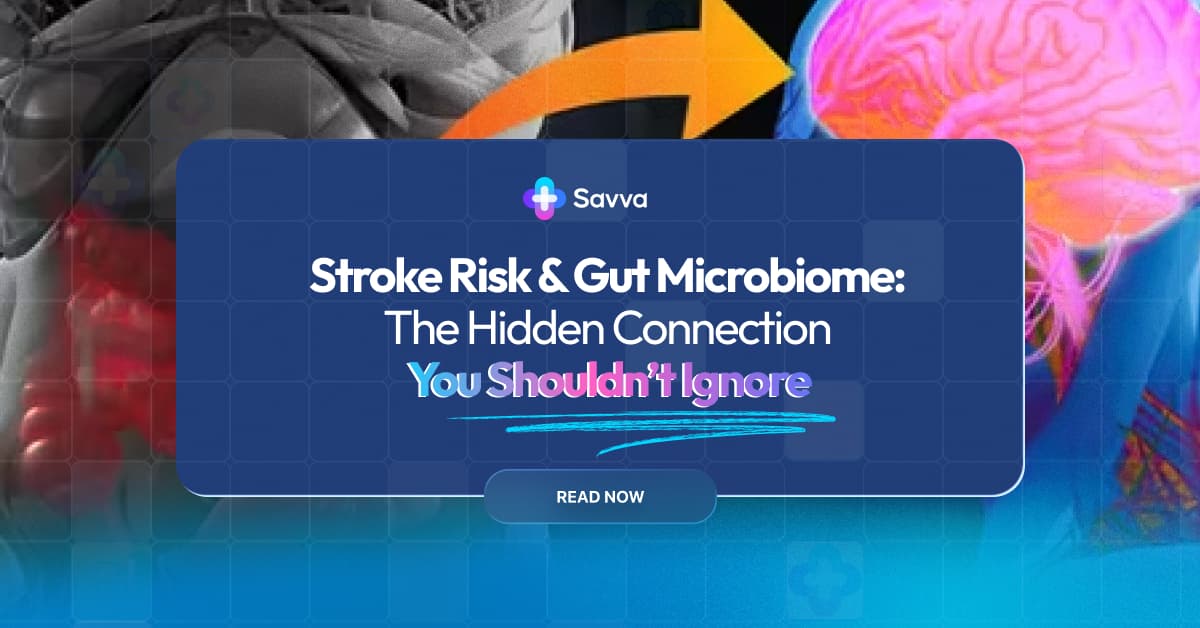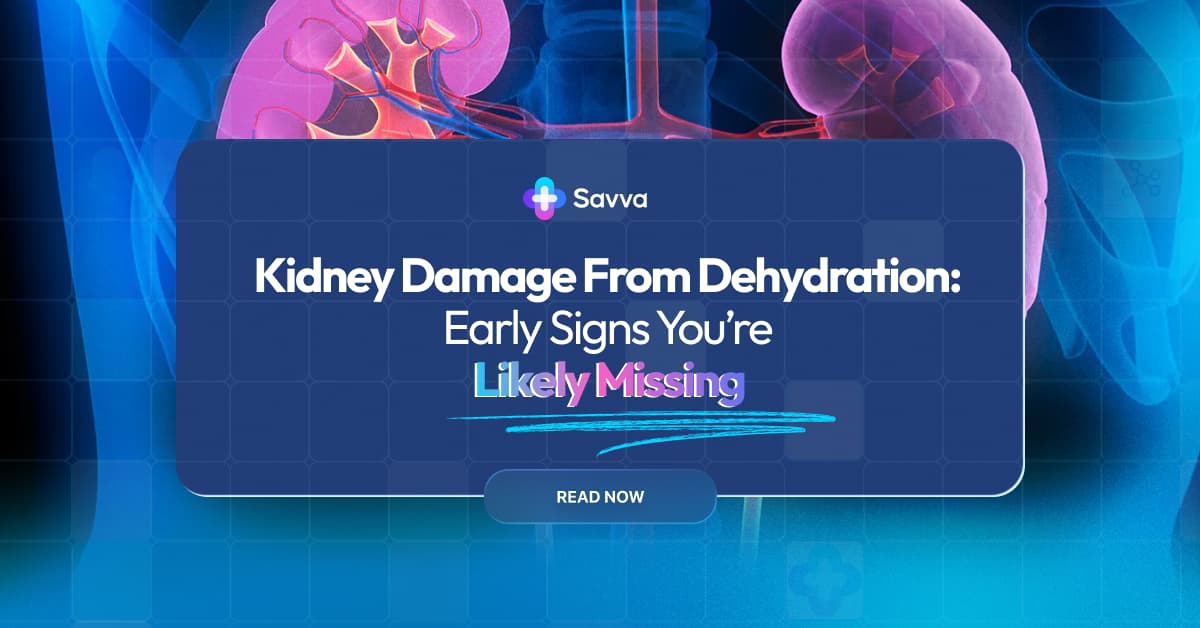What if the real clue to predicting a stroke wasn’t in your brain scans, but hiding in your gut?
It may sound like a strange idea, but growing evidence points in this direction. For decades, stroke risk has been tied mainly to blood pressure, cholesterol, and smoking, the usual suspects. Yet the trillions of microbes in the digestive system may be shaping that risk even earlier, before the classic warning signs appear.
The reality is tough: in the U.S., a stroke happens about every 40 seconds, and one life is lost roughly every three and a half minutes, according to the CDC. With numbers that stark, ignoring the gut’s role isn’t just an oversight, it’s a risk we can’t afford to take.
The Gut-Brain Link: Changing How We Understand Disease
The gut brain axis is more than just a buzzword. It’s a dense communication highway where nerves, hormones, immune molecules, and microbial signals constantly move back and forth.
Inside your digestive tract, over 100 trillion microbes generate compounds that directly influence:
-
Inflammation levels in blood vessels
-
Clotting tendencies in blood
-
The blood–brain barrier, which shields brain tissue
A disrupted gut-brain axis can do more than upset digestion. It may also raise stroke risk by stressing blood vessels in both the heart and brain.
Your gut microbes may be influencing stroke risk long before your doctor spots trouble.
Overlooked Triggers Most People Never Hear About
Beyond diet and lifestyle, certain microbial byproducts are quietly rewriting your vascular fate:
-
Lipopolysaccharide from gut bacteria stroke link: LPS, a toxin from gut bacteria, escapes into the bloodstream during barrier leaks. It drives vessel inflammation and makes blood more clot-prone.
-
TMAO (trimethylamine N-oxide): Created when microbes digest nutrients in red meat and eggs. Elevated TMAO correlates with a 37% higher stroke risk, according to NIH findings.
-
Short chain fatty acids gut stroke protection: Produced when fiber-loving bacteria digest whole foods. SCFAs lower vascular inflammation, stabilize blood pressure, and protect brain vessels from scarring.
Your gut works like a control room, quietly influencing whether your brain’s blood vessels keep flowing smoothly or start narrowing toward dangerous clots.
Can gut bacteria really hint at stroke risk?
Some studies say they might. When scientists examine the gut profiles of stroke patients, they see patterns that stand out from healthier groups.
Key findings:
-
Beneficial SCFA-producers like Anaerostipes hadrus are depleted in stroke patients.
-
Harmful species such as Streptococcus anginosus are enriched, raising recurrence risk.
-
Microbiome biomarkers for stroke prediction are being developed, aiming to detect risk earlier than standard tests.
Imagine predicting a brain attack by analyzing your gut before disaster strikes.
The Gut-Brain Inflammation Cascade Leading to Stroke
Think of it as falling dominoes:
-
Does gut dysbiosis raise stroke chances? Absolutely. Harmful microbes outnumber the helpful ones.
-
Barrier integrity fails, gut barrier leak and brain vascular damage begins.
-
LPS toxins slip into circulation, sparking inflammation.
-
Blood vessels stiffen, plaque forms, and clotting intensifies.
-
A clot blocks brain blood flow, triggering ischemic stroke.
This gut-brain inflammation cascade leading to stroke highlights why the gut is now being studied as much as the heart in stroke prevention.
Health Markers Most People Miss
Doctors focus on cholesterol and blood pressure, but other numbers could quietly matter more:
-
CRP above 3 mg/L: Systemic inflammation is too high.
-
TMAO levels over 6 μM: Blood clots form more easily.
-
Intestinal permeability markers: High scores suggest leaky gut.
-
Microbiota diversity index: Low diversity = less resilience against disease.
Some important numbers linked to stroke risk aren’t yet part of routine medical check-ups.
Diet, Gut Bacteria, and Stroke Prevention
Diet, gut bacteria and stroke prevention are tightly linked. Every meal feeds microbes, and those microbes feed your arteries.
-
Get your fiber in: Beans, oats, leafy greens do more than help digestion. They fuel bacteria that produce SCFAs, which in turn keep inflammation lower and arteries healthier.
-
Bring in something fermented: Yogurt with breakfast, kefir as a snack, or a forkful of kimchi at dinner all add probiotics. These small habits build up over time.
-
Meat in moderation: A diet heavy in beef or processed meat tends to encourage bacteria that generate TMAO. That compound has been tied to clotting and, ultimately, stroke risk.
-
Don’t neglect your teeth: Brushing and flossing isn’t just cosmetic. Bacteria from the mouth can travel south and end up in your gut, where they stir up inflammation.
-
Stick with it: Gut health is about patterns, not quick wins. A steady approach gives the “good” microbes the edge they need to stay in charge.
If you’re trying to lower stroke risk by caring for your gut, the key isn’t complicated. Feed your good bacteria regularly, and they’ll keep working for you.
Where Savva Fits In
Tracking obscure numbers like TMAO or intestinal permeability isn’t something everyday users can (or need to) do. What matters more is making sense of the health signals you already have but don’t fully understand.
That’s where Savva comes in. When launched, Savva will:
-
Read everyday metrics like heart rate, breathing patterns, and respiratory changes.
-
Summarize trends around mental health, stress, and recovery so they’re easier to follow.
-
Highlight shifts in health stats that might deserve attention, giving you a clearer picture of how your body is doing day to day.
Savva won’t diagnose or replace a doctor, but it will simplify complex information into easy-to-read summaries, helping you spot what’s changing in your health.
You can sign up for early access with Savva to be the first to see how it works.
The Future: Gut Microbiome Therapy
The next frontier is intervention. Researchers are testing:
-
Gut microbiome modulation with targeted probiotics.
-
Fecal transplants to reset unhealthy microbiota.
-
Customized diets designed to reverse microbiota stroke risk.
The role of microbiome in stroke is undeniable, and soon, gut microbiome therapy may be as routine as taking blood pressure medication.
Final Thoughts
The connection between gut bacteria and stroke is no longer fringe science, it’s entering mainstream medicine. We’ve always been told to eat better, exercise, and cut salt. Now we know feeding the right microbes may be just as vital.
The brain you save tomorrow may depend on the gut you nurture today.
And with platforms like Savva, this science will soon be translated into everyday health dashboards, turning complex numbers into prevention strategies anyone can act on.
FAQs
Q1: Can gut bacteria predict stroke risk?
Yes, research shows microbial patterns linked to vascular events. Microbiome biomarkers for stroke prediction may soon complement cholesterol, offering earlier and more accurate risk screening.
Q2: How does gut health affect brain health?
Through the gut brain axis. Microbial imbalances fuel inflammation and vessel damage. Supporting gut diversity strengthens vessels and reduces stroke risk significantly.
Q3: What is the gut-brain axis in disease?
It’s the gut-brain communication line. When disrupted, it worsens depression, Alzheimer’s, and strokes. Strong gut health brain health links mean prevention must include gut care.
Q4: Do probiotics reduce stroke risk?
Indirectly. They improve gut barrier function and lower inflammation. While no magic bullet, probiotics and brain health research supports their role in vascular resilience.
Q5: What is the role of the microbiome in stroke?
The role of microbiome in stroke is major. It regulates clotting, inflammation, and vessel health. Intervening through diet and gut therapy may prevent strokes.
Q6: Will doctors use microbiome biomarkers for stroke prediction?
Likely yes. Within a decade, stool-based gut microbiome biomarkers may be routine. Platforms like Savva will simplify these metrics into actionable insights for individuals.


